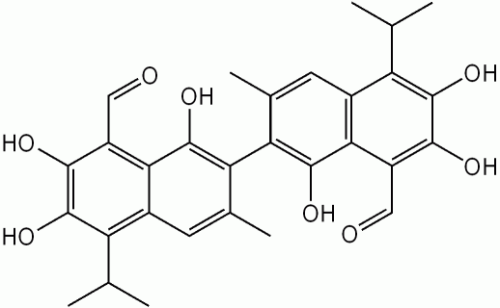UC Professor Eyes Permanent Sterilant To Cull US PopulationJurriaan MaessenSep. 21, 2012 |
Popular 
Trump Threatens War With Iran If No Nuclear Deal: 'There Will Be Bombing' Like They've 'Never Seen'

Rabbi Tells Senate Hearing It's 'Not Enough' to Be 'Not Anti-Semitic' - 'One Must Be Anti-Anti-Semitic'

Sen. Schumer: 'My Job is to Keep the Left Pro-Israel'

Kentucky Rep. Thomas Massie Introduces 'Dual Loyalty Disclosure Act'

Randy Fine, Who Celebrated Israel Killing An American Citizen, Struggling in Florida House Race
 During a speech earlier this year given by University of California-Riverside professor Richard Cardullo, the cottonseed derivative Gossypol is being proposed as an adequate sterilant to bring down the birthrate in the United States. Stating that the substance's permanent sterilization effects on males is already being considered for widespread use in China and many third world countries, Cardullo calls it "an option" for use within the United States. In addition to Gossypol, the professor advised the attending students to lower their standard of living if the earth is to continue carrying humans on its surface. Interesting to note that the professor has recently been selected by the National Science Foundation, the Howard Hughes Medical Institute, and the National Institutes of Health (NIH) to join the Partnership for Undergraduate Life Sciences Education (PULSE) program, funded by the federal government. As part of the university's online science lecture series, recorded on the campus earlier this year, the professor's lecture "Is Earth Overpopulated" is a classic neo-Malthusian regurgitation claiming the planet cannot carry much more people. "If you want to minimize environmental impact, perhaps you should consider lowering your standard of living, for instance." Cardullo also told people could reduce human impact on the earth by becoming vegetarians: "One of the things we know is the production of meat is incredibly expensive," he said. "You are going to start hearing more and more about humans' carbon footprint, and one of the biggest contributions to that carbon footprint is the production of meat. ... We could do a lot simply by just becoming more vegetarian." Although the professor tells his listening audience to "lower their standard of living" to minimize human impact on the earth, he stresses that this in itself isn't sufficient to lower fertility in the United States. Also, the professor continues, famine, disease, war and so on do not have the ability to effectively cull the human population. "(...) we have got to do something about population as well. The United States, we are very affluent. ... we currently have a population of 313 million people... Altogether we gain one person every 15 seconds... If we want to take the population down to 150 million, all it would require in the next 100 years is to lower that birth rate -- because we are not going to do it through any other method, right? That would be horrible." "If we want to decrease the population, we could do it in an number of different ways." Then the professor goes on to point at the screen, on which are depicted several disease-spreading insects. "These are all what's called vectors... carriers of disease which we are familiar with (...) horrible things (...). I'm going to show you things that effects populations more than anything (...), it's those", states the professor as he points to an image of sperm. "Many scientists want to know: are there ways, are there new ways, that we can control population ...or fertility rates, by targeting specific cells, sperm or eggs, so that individuals can make the decision to keep those rates low." A bit later on in the speech, the professor eyes cotton derivative Gossypol, which- as scientists have learned- cause sterility in males by targeting the sperm. Citing Chinese and American research on Gossypol, Cardullo mentions that Gossypol has the potential of killing humans, causing not just temporary but permanent sterility in males. "(...) ultimately the World Health Organization argued against using it. But interestingly enough, there are countries in the world (such as China, Nigeria, Brazil etc.) using it as a permanent method for controlling fertility in males, which is an option." The permanent sterility effects of Gossypol were discovered back in the 1970s, and were further picked up by the main financial contributor of anti-fertility drugs in the 20th century, the Rockefeller Foundation. The Foundation, it seems, investigated Gossypol's anti-fertility effect as well as the possibility of using the substance for "widespread use". The 1985 Rockefeller Foundation's annual report underlined its ongoing dedication towards finding good use for Gossypol.  Indeed, gossypol, a toxic polyphenol derived from the cotton plant, was identified early on in the Foundation's research as an effective sterilant. The question was, how to implement or integrate the toxic substance into crops. "Another long-term interest of the Foundation has been gossypol, a compound that has been shown to have an antifertility effect in men, By the end of 1985, the Foundation had made grants totaling approximately $1.6 million in an effort to support and stimulate scientific investigations on the safety and efficacy of gossypol." In the 1986 Rockefeller Foundation annual report, the organization admits funding research into the use of fertility-reducing compounds in relation to food for "widespread use": "Male contraceptive studies are focused on gossypol, a natural substance extracted from the cotton plant, and identified by Chinese researchers as having an anti-fertility effect on men. Before widespread use can be recommended, further investigation is needed to see if lowering the dosage can eliminate undesirable side-effects without reducing its effectiveness as a contraceptive. The Foundation supported research on gossypol's safety, reversibility and efficacy in seven different 1986 grants." It seems that the funded scientists have indeed found a way of "lowering the dosage" of gossypol, circumventing the toxicity of the substance, so as to suppress or even eliminate these "undesirable side-effects", which include: low blood potassium levels, fatigue, muscle weakness and even paralysis. If these effects could be eliminated without reducing the anti-fertility effects, the Foundation figured, it would be a highly effective and almost undetectable sterilant. Although overtly, research into and development of gossypol as a anti-fertility compound was abandoned in the late 1990s, the cottonseed containing the substance was especially selected for mass distribution in the beginning of the current decade. Around 2006 a media-campaign was launched, saying the cottonseed could help defeat hunger and poverty. In 2006, NatureNews reported that RNA interference (or RNAi) was the way to go. On the one hand it would "cut the gossypol content in cottonseeds by 98%, while leaving the chemical defenses of the rest of the plant intact." Furthermore, the article quoted Dr. Deborah P. Delmer, the Rockefeller Foundation's associate director of food security, who was quick to bury any concern: "Deborah Delmer, associate director of the Rockefeller Foundation in New York City and an expert in agricultural food safety, points out that a benefit of using RNAi technology is that it turns off a gene process rather than switching on a novel function. So instead of introducing a new foreign protein, you're just shutting down one process," Delmer says. "In that sense, I think that the safety concerns should be far less than other GM technologies." A 2006, National Geographic article Toxin-Free Cottonseed Engineered; Could Feed Millions Study Says, quotes the director of the Laboratory for Crop Transformation (Texas A&M Universtity), Keerti Singh Rathore as saying: "A gossypol-free cottonseed would significantly contribute to human nutrition and health, particularly in developing countries, and help meet the requirements of the predicted 50 percent increase in the world population in the next 50 years." "Rathore's study", states the article, "represents the first substantiated case where gossypol was reduced via genetic engineering that targets the genes that make the toxin." I bring into recollection the statement made by the Rockefeller Foundation in its 1986 annual report, which reads: "Before widespread use can be recommended, further investigation is needed to see if lowering the dosage can eliminate undesirable side-effects without reducing its effectiveness as a contraceptive." In the 1997 Foundational report, Rathore is mentioned (page 68). A postdoctoral fellowship-grant was given to a certain E. Chandrakanth "for advanced study in plant molecular biology under the direction of Keerti S. Rathore, Laboratory for Crop Transformation, Texas A&M University, College Station, Texas." Compromising connections, in other words, for someone who claimed academic objectivity in regards to gossypol and its sterilizing effects. Rathore explained the workings of RNAi in a 2006 issue of the Proceedings of the National Academy of Sciences. "Cottonseed toxicity due to gossypol is a long-standing problem", Rathore said, "and people have tried to fix it but haven't been able to through traditional plant breeding. My area of research is plant transgenics, so I thought about using some molecular approaches to address this problem." Rathore also mentioned the desired main funder of his work without actually saying the name: "we are trying to find some partners and will probably be looking at charitable foundations to help us out in terms of doing all kinds of testing that is required before a genetically engineered plant is approved for food or feed. We are in the very early stages and have a lot of ideas in mind, but we need to pursue those. Hopefully, we can find some sort of partnership that will allow us to do them." He also expressed the final adaptation of the cottonseed for widespread use is something of the long term: "(...) right now there are many hurdles when you are dealing with a genetically modified plant. But I think in the next 15 or 20 years a lot of these regulations that we have to satisfy will be eliminated or reduced substantially." The Foundation, as is evident from the statements of Rockefeller's own Deborah Delmer, has been more than interested. The scientific community, we see, now tells young students that using such sterilants are a viable option to reduce the US population. Given the fact that the professor has been selected by large governmental organizations under the general guidance of Obama's science czar John P. Holdren, we must wonder if the "option" of using Gossypol as a sterilent in the United States may have been inspired by Holdren and Ehrlich in their 1977 book "Ecoscience", when they wrote: "Adding a sterilant to drinking water or staple foods is a suggestion that seems to horrify people more than most proposals for involuntary fertility control. Indeed, this would pose some very difficult political, legal, and social questions, to say nothing of the technical problems. No such sterilant exists today, nor does one appear to be under development. To be acceptable, such a substance would have to meet some rather stiff requirements: it must be uniformly effective, despite widely varying doses received by individuals, and despite varying degrees of fertility and sensitivity among individuals; it must be free of dangerous or unpleasant side effects; and it must have no effect on members of the opposite sex, children, old people, pets, or livestock." Originally appeared at http://explosivereports.com/ |



